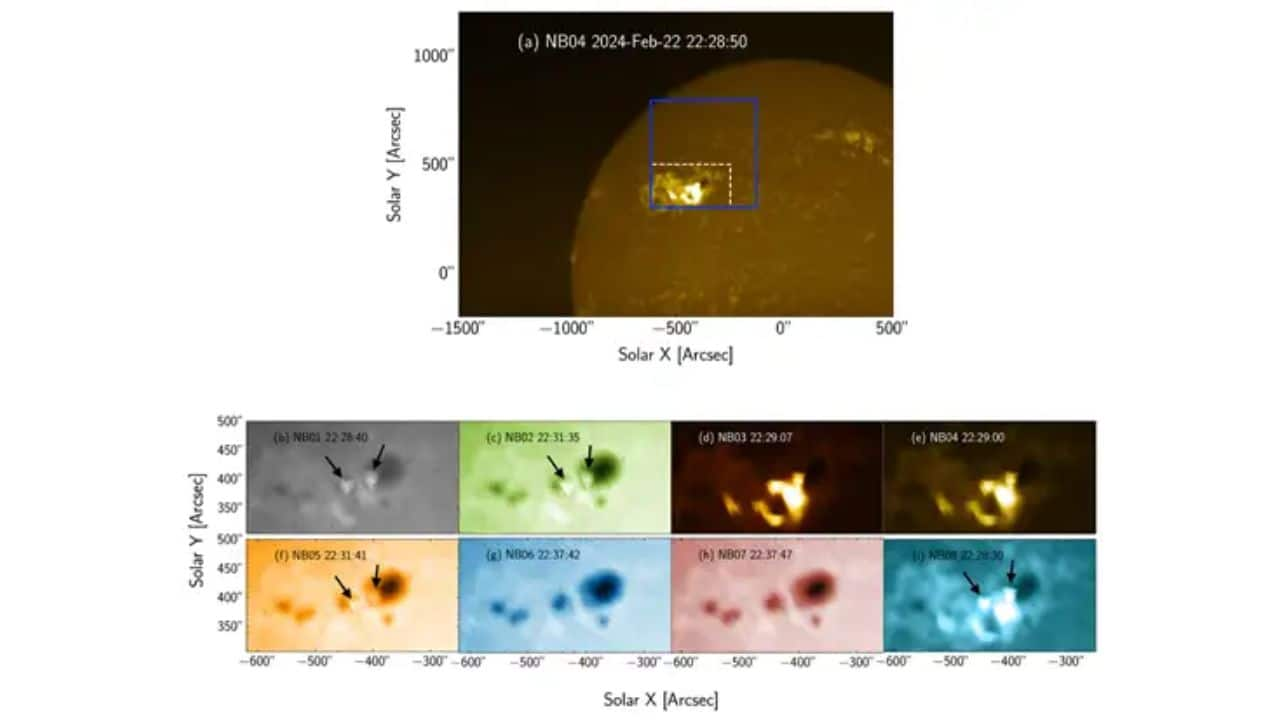



India’s Aditya-L1 mission has captured a unique solar event. The spacecraft recorded the first-ever image of a solar flare ‘kernel.’ This rare observation was made in the lower solar atmosphere. The captured image shows the phenomenon in the photosphere and chromosphere. Scientists say this finding will help study the Sun’s energy bursts.
Aditya-L1 was launched on 2 September 2023. It was placed in a special orbit on 6 January 2024. This orbit, called Lagrange Point L1, is 1.5 million km from Earth. From this location, Aditya-L1 can observe the Sun continuously. It avoids eclipses and obstructions, making data collection easier.
Instruments and Key Observations
Aditya-L1 carries advanced instruments to study the Sun. Its Solar Ultraviolet Imaging Telescope (SUIT) played a key role in the discovery. SUIT recorded the solar flare in the Near Ultraviolet (NUV) band. It can capture images in 11 different wavelengths. This helps scientists examine different layers of the Sun’s atmosphere.
Other instruments, such as SoLEXS and HEL1OS, study solar X-rays. These tools detect solar flare activity and energy bursts. The combination of these instruments offers a complete view of solar dynamics.
 Observation of the flare as obtained from various SUIT filters. (Image: ISRO)
Observation of the flare as obtained from various SUIT filters. (Image: ISRO)
On 22 February 2024, SUIT detected an X6.3-class solar flare. This is one of the most intense types of solar eruptions. Scientists observed brightening in the NUV range, never seen in such detail before. The event confirmed that solar energy moves through different atmospheric layers.
Understanding Solar Flares
Solar flares are sudden energy bursts from the Sun’s surface. They occur due to the Sun’s dynamic magnetic field. These flares release energy as radiation and charged particles. Such eruptions can affect Earth’s communication and space weather.
Aditya-L1’s instruments allow scientists to study these flares closely. They can track how the energy spreads across different layers. The latest observation also confirmed a link between flare energy and temperature changes in the solar corona.
Scientists have long studied solar flares using space missions. However, NUV observations were rare due to the lack of telescopes. Aditya-L1 now fills this gap, offering new insights into solar physics.
Future of Aditya-L1
Aditya-L1 continues to collect valuable data on solar activity. Scientists believe its findings will reshape the study of solar flares. The mission is expected to provide more discoveries in the coming years. The latest findings have been published in The Astrophysical Journal Letters.
With its advanced instruments, Aditya-L1 is leading India’s solar research. The mission is set to deepen our understanding of the Sun’s influence on space weather.
Discover the latest Business News, Sensex, and Nifty updates. Obtain Personal Finance insights, tax queries, and expert opinions on Moneycontrol or download the Moneycontrol App to stay updated!
Find the best of Al News in one place, specially curated for you every weekend.
Stay on top of the latest tech trends and biggest startup news.